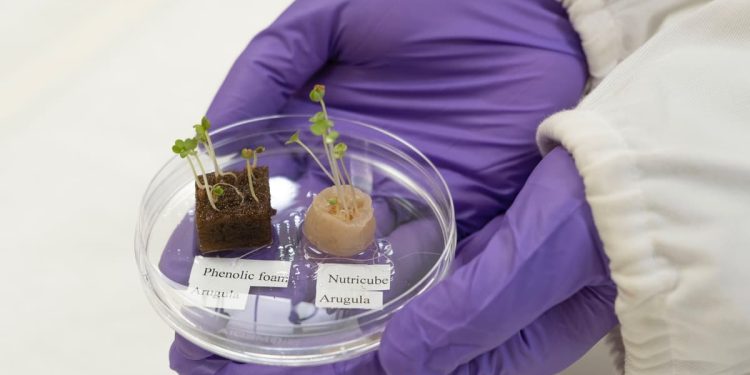As compared to traditional agriculture, hydroponic farming uses less space and less water, plus it requires no soil. It still does require a growth medium, though – and scientists have recently created a better such medium, derived from discarded human hair.
Our hair contains large amounts of a protein known as keratin, which is in turn made up of amino acids.
These acids boost plant growth on their own, plus they’re capable of binding with other nutrients, then releasing them over time. For these reasons, keratin could make a great hydroponic growth medium, except for the fact that it’s not strong enough to form a substrate that physically supports the plants … at least, not without a bit of help.
With this drawback in mind, scientists from Singapore’s Nanyang Technological University started by obtaining cut-off hair from salons, extracting keratin from that hair, then mixing the keratin with wood-pulp-derived cellulose fibers to strengthen it. After the mixture had dried, it formed a spongy material. That material was subsequently used as a hydroponic growth medium, in the growing of arugula and bok choy plants.

Not only was it found to support the plants and boost their growth, but its porous structure also made it highly effective at drawing in and holding the water-based nutrient solution used in the hydroponic setup. More precisely, it was able to hold 40 times its own weight in water, which is reportedly similar to the capacity of existing commercial growth mediums.
Unlike those other mediums, however, the keratin-based material completely biodegrades within four to eight weeks – becoming plant fertilizer in the process. While this does mean that it would need to be replaced more often, it also wouldn’t leave any waste in the environment after being discarded.
Additionally, plants grown in the keratin medium developed longer roots than those grown in traditional mediums, allowing them to take up more water and nutrients. And as an added bonus, if there’s not enough hair to produce the medium on a commercial scale, other sources could likely be used.
“Besides hair, livestock farming produces large amounts of keratin as biowastes, as it is found abundantly in wool, horns, hooves and feathers,” said the lead scientist, Prof. Ng Kee Woei. “Since keratin can be extracted from many types of farm wastes, developing keratin-based hydroponic substrates could be an important strategy for recycling farm wastes as part of sustainable agriculture.”
A paper on the research was recently published in the journal ACS Sustainable Chemistry & Engineering.
Source: Nanyang Technological University












